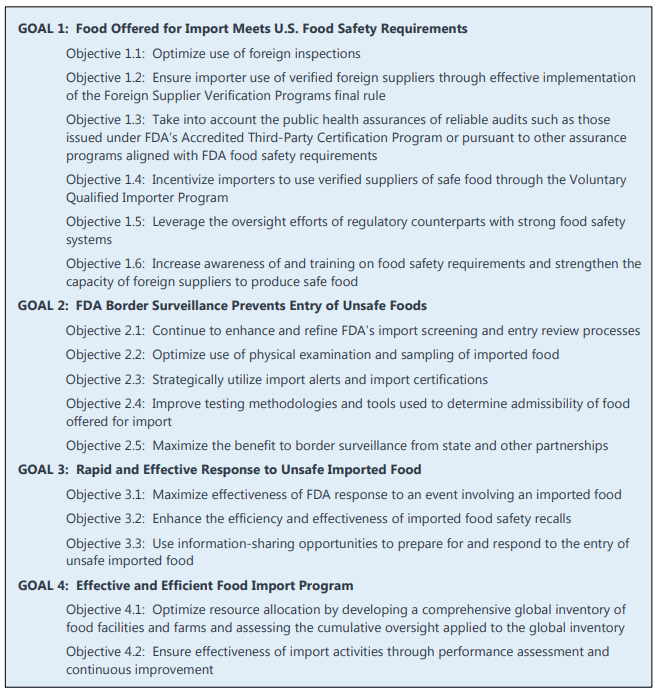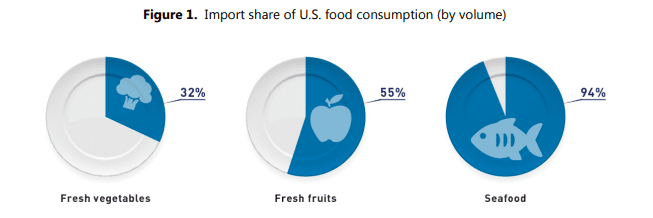FDA’s New Imported Food Safety Strategy
FDA’s New Imported Food Safety Strategy
In response to the new challenges and increase in food imports, the FDA Food Safety Modernization Act was enacted in 2011, and gave the FDA expanded authority to mandate additional preventive controls as well as new and supplementary oversight and enforcement authorities. FSMA also specifies distinct roles for importers, manufacturers, third-party auditors, foreign regulatory bodies, and others.
Sandler, Travis and Rosenberg states, “The FDA’s new strategy aims to help determine the best way to use these tools across the different segments of the international food supply chain in ways that decrease public health risks while maintaining a level playing field for domestic and foreign producers. Its goals are to prevent food safety problems in the foreign supply chain prior to entry into the U.S., effectively detect and refuse entry of unsafe foods at the border, and rapidly respond to unsafe imported foods. More broadly, the strategy seeks to create an effective and efficient food import program.”
Goals & Objectives
FDA’s imported food safety goals fall into three (+1) categories:
(1) preventing food safety problems in the foreign supply chain prior to entry into the United States,
(2) effectively detecting and refusing entry of unsafe foods at the border, and
(3) rapidly responding when FDA learns of unsafe imported foods.
(4) to create an effective and efficient food import program.

[maxbutton id=”33″ url=”https://thescarbroughgroup.com/wp-content/uploads/2019/03/7850_FINAL-2-25-19-FDA-Strategy-for-the-Safety-of-Imported-Food_.pdf” text=”Download FDA Strategy for the Safety of Imported Food (PDF)” ]

